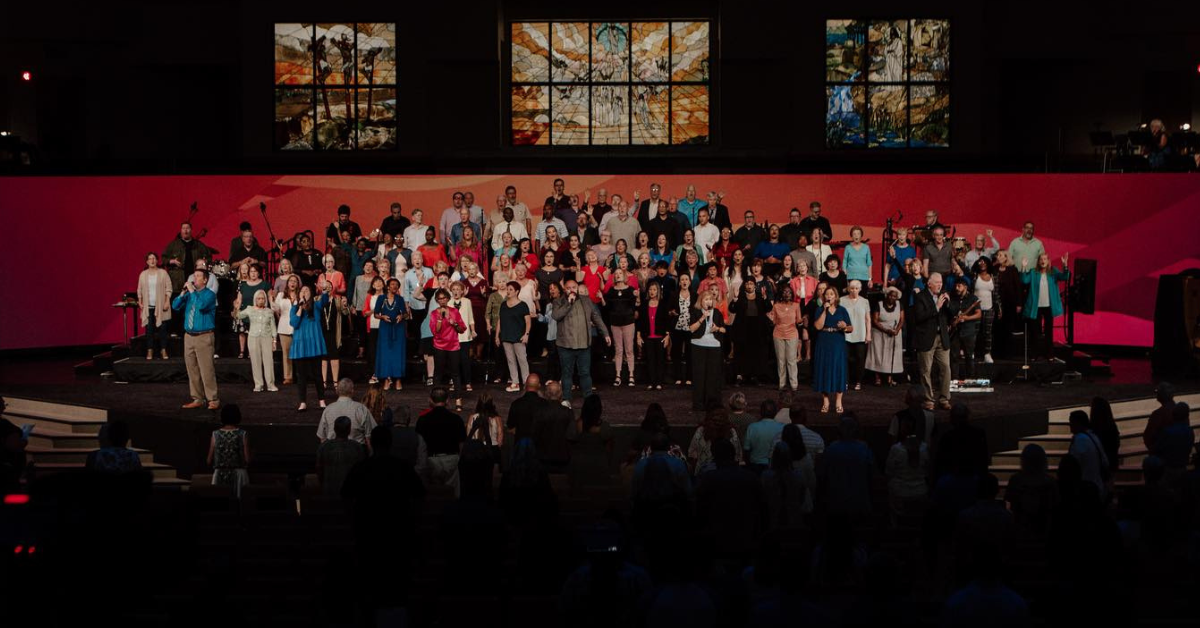Flatirons Church Was Growing—But Unhealthy. Here’s How They Changed That.
Flatirons Community Church is a multi-site church that casts a wide net across Colorado in a region where people are more likely to go hiking or...
3 min read
 Tara VanderSande
:
August, 22 2022
Tara VanderSande
:
August, 22 2022

Where do you start when it’s time for a leadership transition in your church? If you’re the senior pastor or executive pastor and want to set up a process for a successful transition, what are the foundations for healthy change? Whether you are moving into retirement, or to a different call from God, the overarching goal in leadership succession is to leave your church as a thriving place of ministry that will continue to reach your community for God’s Kingdom. That’s a great legacy!
A positive succession process includes a flourishing culture, growing leaders, and clear communication.
Every church can lay the foundation for a healthy pastoral succession by focusing on growing a flourishing culture within the church staff and volunteers. A thriving, healthy team is a great first step for future transitions. Such workplace health also means that the church’s values and vision are already shared by the staff and volunteers and clearly articulated. This makes it easier to communicate the essence of your church to future leaders.
The best way to start improving workplace culture and building a strong team is to assess your current situation. Best Christian Workplaces (BCW) offers Employee Engagement Surveys to help you understand where your team is doing well and areas you can focus on to improve workplace culture. If you already have several years of data from engagement surveys, then consider how an updated survey can help you pinpoint current trends and continue to refine your healthy foundation. Flourishing churches continue to learn from employee engagement surveys as they make ongoing investments in a healthy culture.
A commitment to ongoing leadership development for both staff and volunteers strengthens your current ministry and provides a pattern of growth for your team. Paul’s charge to Timothy is often quoted in the context of discipleship within the church—and it is appropriate for that context (see 2 Timothy 2:2). But the biblical pattern of investing in younger leaders who will invest in others is also wise management and provides a trained pool of leaders, no matter who God calls as the next senior leader of your church.
Leaders define and create culture, so improving leadership behaviors impacts the health of your church. BCW has developed a 360 Leadership Review process that is research-based and aligns a leader's behaviors and skills with your organization's needs. Participating in BCW’s 360 Leadership Review will help develop your leadership talent, setting the stage for successful transitions.
While the future senior pastor or another senior leader of your church may or may not come from an internal hire, the investment in leadership development will bring fruit in expanded ministry capabilities.
A church that is in the midst of a change process will be buzzing with different viewpoints, expectations, hopes, and dreams. Churches often underestimate the amount of time and effort that’s essential for positive communication before, during, and after a leadership change.
Also, there are several distinct groups of people who need particularly tailored communication in a succession process. There are unique needs and expectations from senior leaders, staff, volunteer leaders, members, regular attenders, and other friends of the ministry. You want to provide a clear road map for the transition, so people are not left to speculate or imagine alternate scenarios.
Healthy communication is one of the 8 attributes of flourishing culture, as identified in the recent book, Road to Flourishing: Eight Keys to Boost Employee Engagement and Well-Being. During a leadership transition, all your previous work on healthy communication and building a foundation of trust will enable the various components of the church to come together in the change process.
Bob Smith, Pastor of Church Planting and Expansion of 2|42 Church in Michigan described some key learnings from their senior pastor succession in a recent podcast episode..
One key area they addressed was considering the needs of the church in the future. I find that sometimes a search process may be unsuccessful because the committee looks for a pastor who meets the needs the church experienced in a past season. The next leader for your church is going to lead forward—into the next 5 to 10 years. So, the more your team can articulate specifics about a shared vision for the future, the better alignment with potential leaders.
Also, broad involvement from staff and volunteers is important for community buy-in and clarifying expectations. People want to feel heard and have a clear way to speak into a process. I was impressed by the breadth of input that the team at 2 | 42 Church solicited in their senior pastor search process. They sought meaningful input about key competencies for a senior pastor from more than 100 people, including staff, key leaders, and volunteers.
The elder board and senior leadership team of your church may or may not have experience in a succession process, so they may need to bring in outside resources. Bob Smith shared how 2 | 42 Church combined inputs, with an internally led and professionally supported process. Their church had previously worked with BCWI on an Employee Engagement Survey; they did a fresh survey as they were going through their succession process. A pastor-search organization can manage the selection process, but your church still needs to have done the work of understanding your unique culture and values. Internal leadership will understand how to incorporate varied voices and viewpoints within your church community. Then you can incorporate outside professional support as needed to accomplish the search process.
Wherever you are in the cycle of senior leadership succession, all your current and past emphasis on a flourishing culture, leadership development, and clear communication create a strong foundation for change. Continuing to build on your strengths is the best way to prepare for leadership succession, whether those changes are happening in the next few years or are further out on the horizon.
If succession is on the near-term horizon, then an updated Employee Engagement Survey and Leadership 360s will give current and future leaders a great assessment of their starting place for building on your healthy church culture.
###

Flatirons Community Church is a multi-site church that casts a wide net across Colorado in a region where people are more likely to go hiking or...

3 min read
Situation The Crossing Church in Costa Mesa, California was launched in September 1988 with Tim Celek as the founding pastor. The church grew and...

5 min read
Feedback can be difficult to receive, especially when it’s poorly gathered and communicated. This can leave leaders feeling skeptical and uneasy...